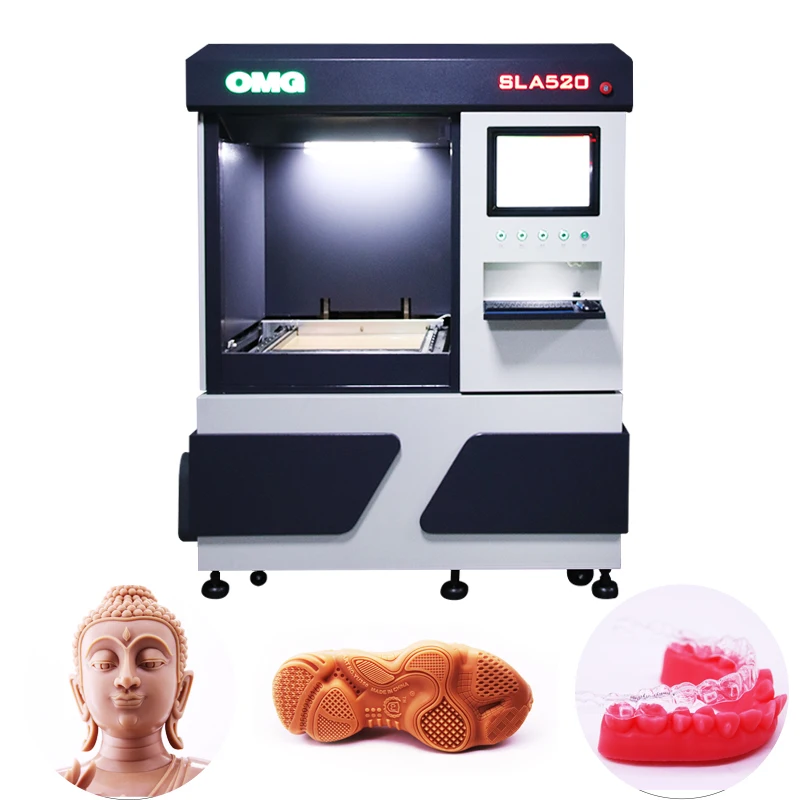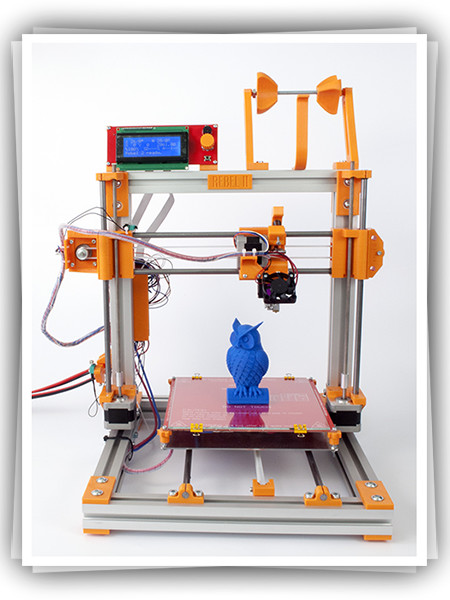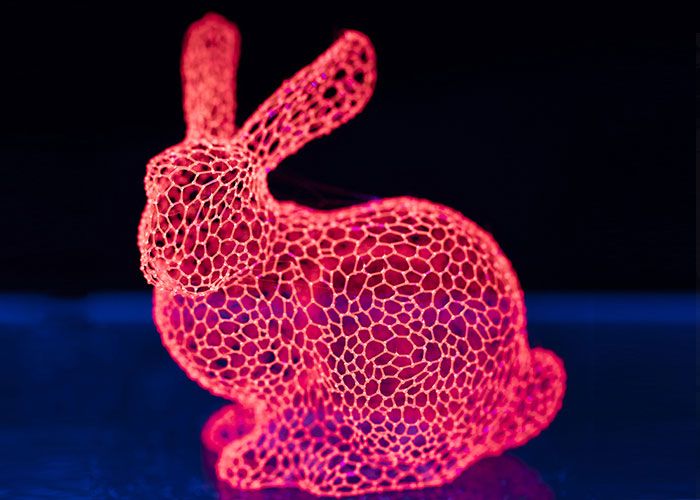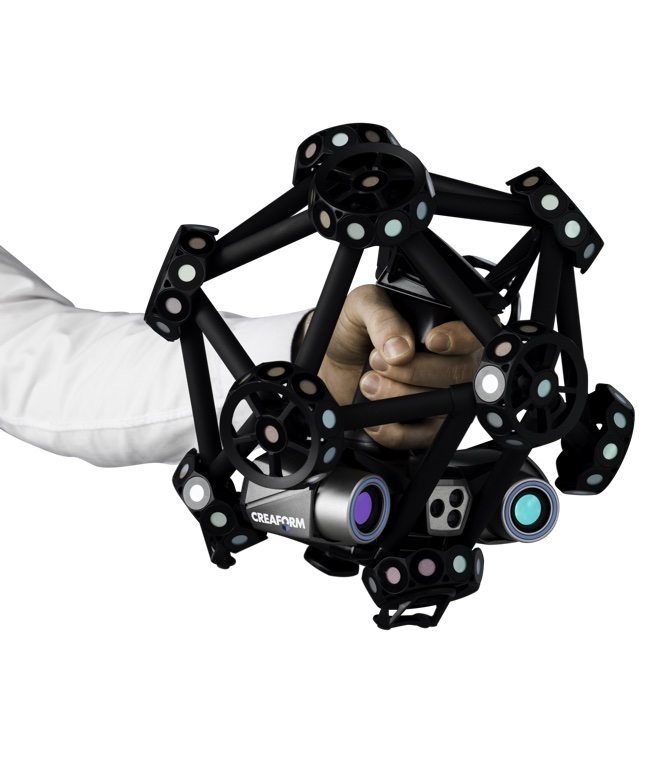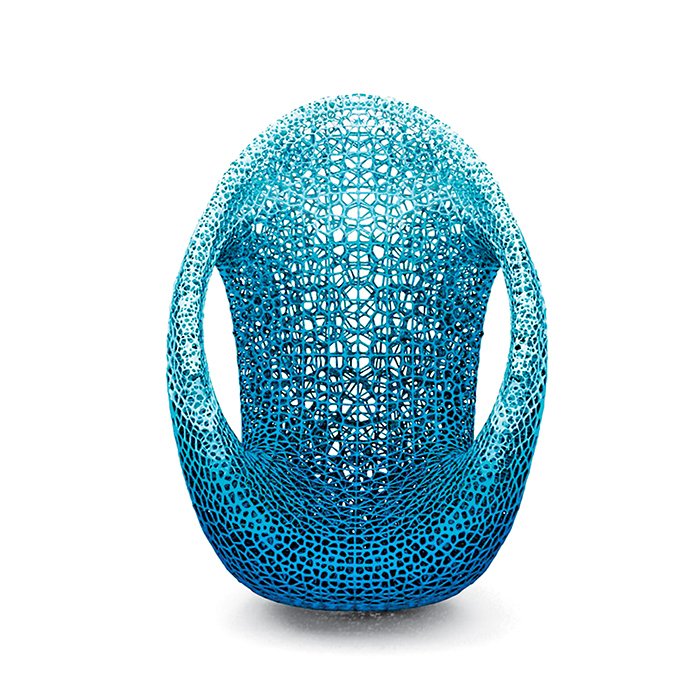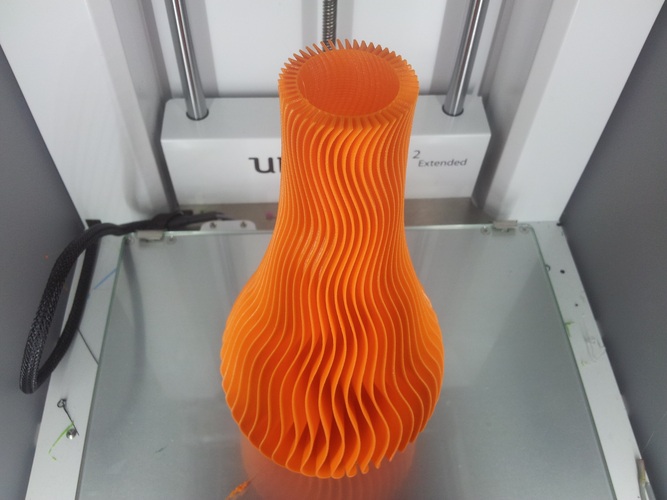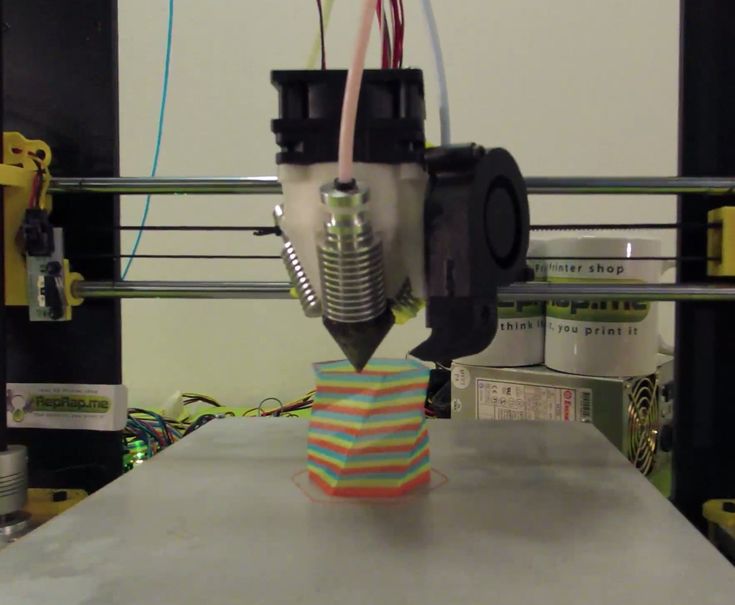3D printing manufacturing technology
The evolution of 3D printing in manufacturing
Paul Benning, Chief Technologist at3D Print HP Inc. discusses the current technology trends within the manufacturing industry relating to 3D printing...
Paul Benning, Chief Technologist at 3D Print HP Inc. discusses the current technology trends within the manufacturing industry relating to 3D printing.
What is 3D printing?
3D printing is a manufacturing process that produces objects in accordance to a 3D digital model. By using a 3D printer and adding material layer by layer, such as plastics and metals, complex objects can be produced both rapidly and at low cost, in short runs or as one-of-a-kind parts. HP Multi Jet Fusion 3D technology enables customers to produce complex parts with controllable physical and functional properties at each point and provides speed, quality and strength throughout the manufacturing process for a range of industries and applications.
How has 3D printing evolved over the years?
We’re on the cusp of the 4th Industrial Revolution, where physical and digital technologies will radically alter how companies conceive, design, produce, distribute and repair nearly everything. The increased global demand for sustainable solutions and customised products has resulted in a surge in demand for 3D-printed parts and products. Technological innovations in the field have halved costs while delivering twice the performance. As the 3D printing sector moves beyond prototyping, use of this technology, particularly in supply chains, is becoming increasingly widespread.
In 2018, HP launched Metal Jet technology, the world’s most advanced 3D printing technology for the high-volume manufacturing of production-grade metal parts. It delivers mechanically functional final parts with up to 50x more productivity than other 3D printing methods, and at significantly lower cost compared to other binder jetting systems.
As we see more customers scale for production and further collaboration through a growing ecosystem of partners, the possibilities are growing for a new era of manufacturing.
What are the current trends in 3D printing?
A trend we’ll see is the accelerated impact of digital manufacturing take hold in the form of production applications, particularly across the automotive, industrial and medical sectors. In the auto sector, we’ve seen an increased focus on developing production-grade materials for auto applications as 3D printing gravitates from prototyping to full production of final parts and products. Additionally, as new platforms such as electric vehicles enter mass production, HP Metal Jet is expected to be leveraged for applications such as the light weighting of fully safety-certified metal parts. Industrial 3D manufacturing also enables the automotive industry to produce applications in new ways that were previously impossible, along with the ability to design application-specific parts for individual systems or models.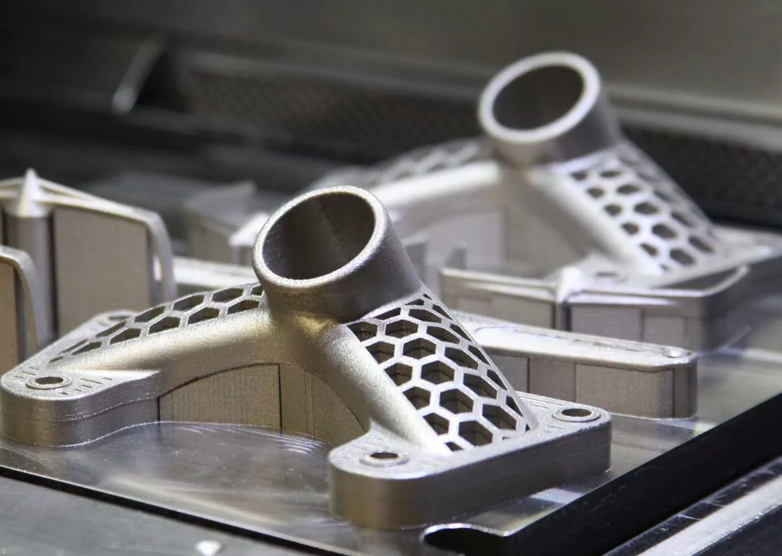
What innovative technology have you seen being used with 3D printing?
One really powerful example of 3D printing we’ve seen in the last few weeks is how 3D suppliers and digital manufacturers are coming together to help produce vital applications to help fight COVID-19. HP and its global network of partners and customers are printing crucial parts such as ventilator valves, face mask adjusters and hands-free door handles - for local hospitals and healthcare providers around the world.
Beyond how 3D is supporting the current situation at hand, we’ve seen myriad ways that the technology has been used – everything from customised prosthetic limbs, to parts that are used in cars, to invisible braces helping people to achieve their desired smile.
With industries facing increased customer centricity when it comes to the services they provide, how can 3D printing help to drive customer centricity?
One of the major benefits of 3D printing is the ability to customise products and parts fully for the end user. This may be in the form of design preference, or it could serve a more practical purpose such as improving the fit or usability of a product. For example, 3D printing makes it easy to customize prosthetic limbs and shortens the production time from weeks to days, and it can deliver custom-fitted and individualized footwear, including insoles, through innovative 3D scanning, dynamic gait analysis and manufacturing technologies.
This may be in the form of design preference, or it could serve a more practical purpose such as improving the fit or usability of a product. For example, 3D printing makes it easy to customize prosthetic limbs and shortens the production time from weeks to days, and it can deliver custom-fitted and individualized footwear, including insoles, through innovative 3D scanning, dynamic gait analysis and manufacturing technologies.
How can 3D printing make manufacturing more agile?
By allowing consumers to dictate demand, 3D printing lends itself to increased supply chain mobility, flexibility and adaptability, therefore reducing costs and waste. Companies no longer have to predict consumer demand by gambling on how much of a product they will sell; 3D printing ensures the infinite flexibility as they are able to print what they need.
SEE ALSO:
-
Industry 4.0: managing the Cultural Impact in Manufacturing
-
Oracle: a modern platform for smart connected factories
-
PwC: digital factories shaping the future of manufacturing
-
Read the latest issue of Manufacturing Global here
3D printing also allows manufacturers to prototype more successfully, as they can print a new model/part with every advancement or amendment of the design, through a simple tweak on the software, printed instantly.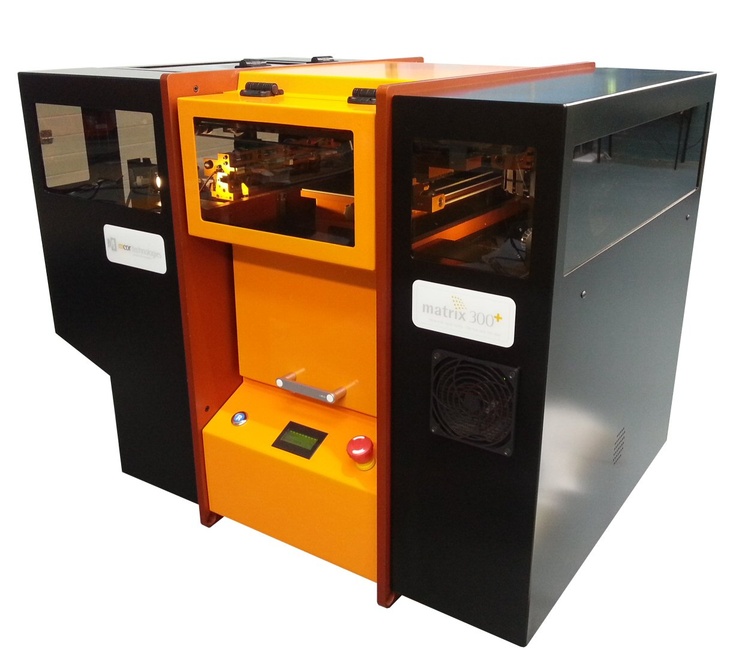 Thus, saving time and money rather than if they had to produce new moulds each time.
Thus, saving time and money rather than if they had to produce new moulds each time.
3D printing also allows for incredible volumes to be produced in a short time frame. HP customer SmileDirectClub uses Mult Jet Fusion 3D printing solutions to produce more than 50,000 personalised moulds each day, and anticipates printing nearly 20 million mouth molds over the next 12 months alone.
In 2018, more than 10 million parts were produced using HP Multi Jet Fusion technology worldwide.
How can 3D printing benefit the manufacturing industry?
3D printing completely reinvents the way things are conceived, designed, produced and distributed, significantly lowering development and production costs, immensely simplifying logistics, and lowering carbon footprint. It holds great potential to revolutionise supply chains, and we are beginning to see an increase in the number of companies who turn to this form of manufacturing in order to stay competitive and create products faster.
3D printing will be the catalyst for significant shifts within the global manufacturing sector, and leaders will be defined by their ability to harness its full disruptive power. In a fully digital future, the production of goods will be driven closer to the consumer, democratizing manufacturing on a worldwide scale and allowing products to be mass-customized.by traditional processes, designers will be free to create entirely new categories of products, as the line between ideas and physical reality erodes. And manufacturers, no longer tethered to overseas factories, will shorten supply chains with a newfound ability to custom-produce anything, anywhere.
What are the challenges of 3D printing?
The most significant hurdle is the change of mindset. It is crucial to think about designing for 3D from the first stages of product development, to think about the wider implications of how development is staged to full scale production, and how supply chains can be further optimized. There are deep, engrained sense of limits and hurdles for those who have worked decades in traditional manufacturing. With 3D manufacturing, there is almost a re-learning process that needs to take place – the vast majority those limits no longer apply. The design possibilities are limitless. And, of course, there are new skills that must be developed to fully leverage these possibilities. For engineers, new elements of the design process will be introduced into their roles where they will need to learn the mechanics of 3D printing to become experts in the processes and best support operational functions during production.
There are deep, engrained sense of limits and hurdles for those who have worked decades in traditional manufacturing. With 3D manufacturing, there is almost a re-learning process that needs to take place – the vast majority those limits no longer apply. The design possibilities are limitless. And, of course, there are new skills that must be developed to fully leverage these possibilities. For engineers, new elements of the design process will be introduced into their roles where they will need to learn the mechanics of 3D printing to become experts in the processes and best support operational functions during production.
What applications of 3D printing have you seen within the industry?
3D printing is being used in a variety of industries including automotive, manufacturing, healthcare and consumer goods. Alongside the incredible efforts to help support the COVID-19 pandemic, I’ve also seen some fantastic applications in the commercial sector. 3D printing is being used by major car manufacturers to produce gear sticks and safety gloves, fashion designers are producing 3D printed handbags and shoes and companies are printing custom foot insoles with just a scan of a patient’s foot. The possibilities really are endless and I’m looking forward to seeing what comes out of the industry over the next few years.
3D printing is being used by major car manufacturers to produce gear sticks and safety gloves, fashion designers are producing 3D printed handbags and shoes and companies are printing custom foot insoles with just a scan of a patient’s foot. The possibilities really are endless and I’m looking forward to seeing what comes out of the industry over the next few years.
The work being done by Jaguar Land Rover as they advance EV development, or Vestas VBIC, the largest provider of wind turbines in the world, are significant examples of how 3D printing is enabling industries to move seamlessly from prototyping to production, with incredible flexibility to make improvements in near real time.
For more information on manufacturing topics - please take a look at the latest edition of Manufacturing Global.
Follow us on LinkedIn and Twitter.
3D Printing in Manufacturing - Challenges and Advantages
3D Printing in Production
Low volume manufacturing
Moving across to 3D printing will make it possible for businesses to consider short-run part production, where focused product teams can launch new products more frequently.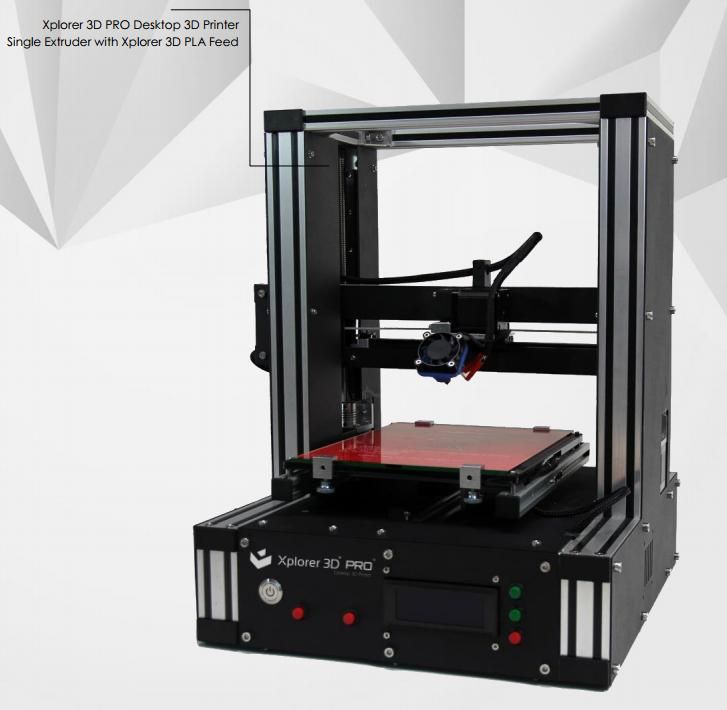 They will be able to work beyond the realms of their imagination and certainly beyond the restraints that come with traditional methods. It delivers an agile development process for physical parts and has the ability to accelerate the production and the time it takes to get to market.
They will be able to work beyond the realms of their imagination and certainly beyond the restraints that come with traditional methods. It delivers an agile development process for physical parts and has the ability to accelerate the production and the time it takes to get to market.
There is no doubt that 3D printing is way ahead of conventional methods when it comes to manufacturing the first several hundred parts. But is 3D printing also suitable for manufacturing on large scale?
High volume manufacturing
3D printing is a technology that is developing and growing faster than most other technologies due to the way it can influence manufacturing processes and help businesses perform to a higher level. A production line that is set up for 3D printing is easier to alter than that of a production line for traditional manufacturing, making 3D printing a feasible option for many reasons.
The whole production line can be adjusted and adapted with the speed of the printing production line.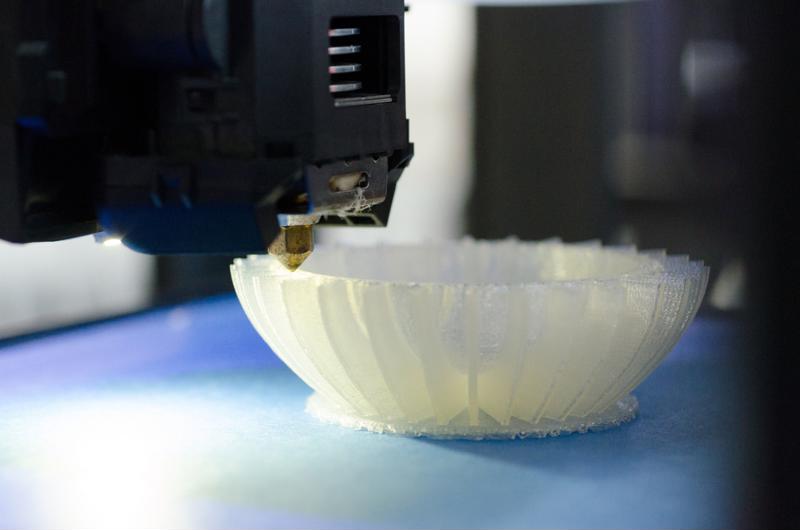 Therefore, improvements to machinery, adjustments to the print speed or even a change of product can be made almost instantly. When you consider this against older methods, it can take several weeks or months to make the changes and then begin producing again.
Therefore, improvements to machinery, adjustments to the print speed or even a change of product can be made almost instantly. When you consider this against older methods, it can take several weeks or months to make the changes and then begin producing again.
It is inevitable that the capabilities that come with 3D printing and the way in which technology is evolving will enable businesses to adopt this new way of producing products or parts and it is likely that this adoption is going to grow well in the future.
What are the advantages of using 3D printing in manufacturing?
1. Reduction in costs
Traditional manufacturing methods are notoriously expensive, whereas the 3D printing process makes the creation of parts products cheaper and more accessible. Unlike traditional manufacturing where many different people may be required to operate a number of machines or a production line is required to piece together the product, 3D printing removes this. Each 3D printer will require an operator to start the machine before it begins an automated process of creating the uploaded design. Therefore, when using 3D printing for manufacturing, the labour costs are significantly lower as there is no need for skilled machinists or operators to form part of the process.
Therefore, when using 3D printing for manufacturing, the labour costs are significantly lower as there is no need for skilled machinists or operators to form part of the process.
2. Reduction of risks
When businesses have the ability to confirm a design before committing it to production, it can help to remove the risk of errors, wasted materials and money. Creating products with 3D printing can help to increase confidence, especially when you consider that a 3D prototype is easier to redesign and alter than anything that has been created using a traditional method.
When it comes to setup costs, manufacturers won’t have to produce so much of a product in order to justify the setup costs. The traditional methods of production often relies on the efficiencies of mass production and requires a large number of assembly workers, whereas, 3D printing requires the filament material and not a lot more to fulfil an order.
3. Failure is cheaper and faster
3D printers will not need to be retooled between production runs.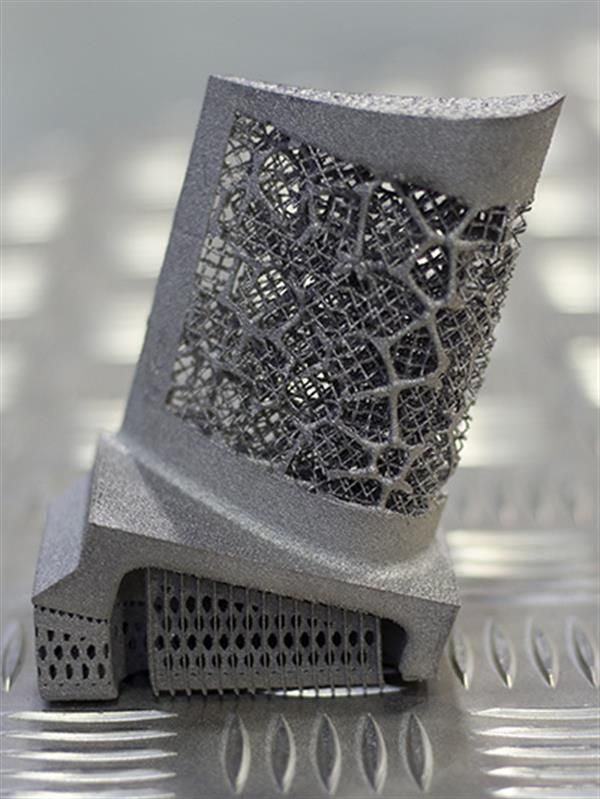 The speed at which a 3D printer can assemble could be deemed to be slower than that of a traditional assembly line. However, when you factor in machinery problems that can stop production and human error, there is more that can go wrong with traditional manufacturing.
The speed at which a 3D printer can assemble could be deemed to be slower than that of a traditional assembly line. However, when you factor in machinery problems that can stop production and human error, there is more that can go wrong with traditional manufacturing.
4. Time to market
3D printing makes it possible to develop ideas at a faster pace. In some instances, it could be possible for 3D concepts to be designed and printed on the same day but in terms of large-scale manufacturing, it is certainly faster than conventional methods. This can help companies to reduce manufacturing time from months to days while ensuring that they remain ahead of their competitors.
5. Build and grow
For businesses that adopt 3D manufacturing, it is possible to continue to grow and evolve through the production of items that have been created from their imagination. There are no limits when it comes to 3D manufacturing because things can be created virtually and then printed in a very short time frame.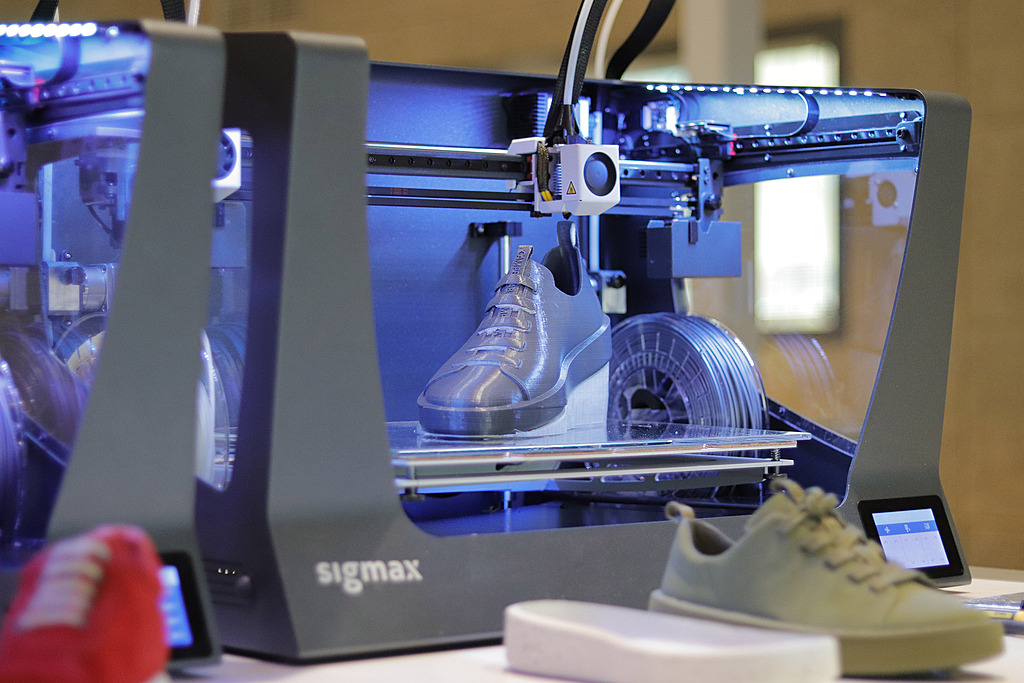 Therefore, for any business, a product can go from an idea, to a concept right through to the finished part.
Therefore, for any business, a product can go from an idea, to a concept right through to the finished part.
6. No Limitations in geometries
For many years, standard manufacturing techniques have held back the design of products. However, with many improvements made already and more to come in the future, the 3D manufacturing process can create an endless list of possibilities. Geometries that were once difficult can now be achieved such as holes that change direction or square interior cavities. These kinds of designs have become possible and simpler to construct.
7. Less waste
As this is a relatively new technology that is gaining momentum, the material cost can still remain high. However, the range of materials is growing and this makes it possible for the price to decrease over time. But, in comparison to traditional methods, the overall cost is a lot lower. The manufacturing process can result in a lot of waste, particularly where traditional manufacturing is concerned. However, this is where 3D printing for manufacturing can transform the amount of waste, because of the way in which it uses resources more efficiently.
However, this is where 3D printing for manufacturing can transform the amount of waste, because of the way in which it uses resources more efficiently.
When it comes to using 3D printing for manufacturing, a 3D printer will only use the material that passes through the extruder of the printer and that is used for the assembly of the product.
In comparison to injection–molds, often there is a requirement to use additional materials to fill the molds. In the majority of mass production needs, 3D printing will deliver a lower amount of waste (for example the support material) than traditional manufacturing.
8. Less storage space
Many industries require businesses to store the parts and products that they need or sell. This means that a significant amount of storage space is required to house goods that can sit on a shelf for months or even years. This costs a lot of money. By using 3D printing for manufacturing, costs can be cut by reducing the amount of storage space that is needed.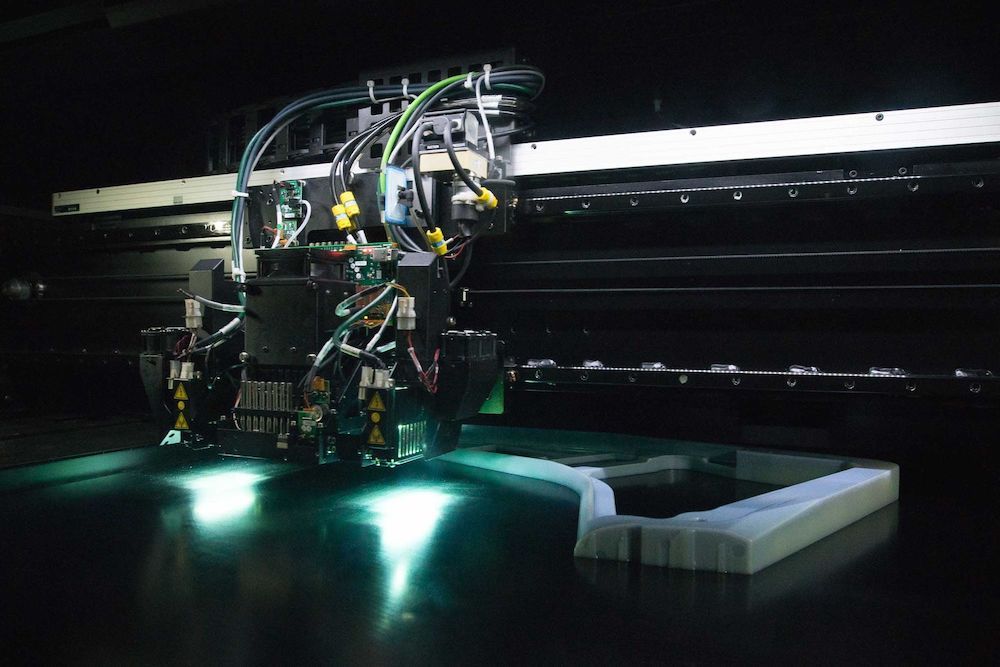 3D printing makes it possible for goods to be made as they are sold. This means that there will be no overproduction and reduced storage costs.
3D printing makes it possible for goods to be made as they are sold. This means that there will be no overproduction and reduced storage costs.
3D printing technologies
Today, there are many technologies for creating real objects from 3D models. The most common and affordable technology is plastic printing (FDM technology).
In our article, we give a classification of printing technologies and describe each of them.
At present, 3D printing technologies are divided into 4 main categories:
1. Extrusion - extrusion of molten material;
2. Photopolymerization - UV or laser curing of a polymer.
3. Printing by sintering and melting materials
4. Lamination - gluing material layers with subsequent cutting;
In addition, there are other technologies that do not fall into the above categories, we will talk about them at the end of this article.
- 1. Material extrusion
1. 1. Fused Deposition Modeling (FDM) 0020
1. Fused Deposition Modeling (FDM) 0020
The technology works on the principle of material deposition in layers. Plastic or metal filaments are unwound from a roll (cartridge) and fed into the print head (extruder). The extruder heats the filaments to a liquid state and extrudes the material through the nozzle, moving in the horizontal and vertical directions, layer by layer, forming an object.
Benefits of FDM 3D printing
- • Speed and ease of fabrication
- • availability;
- • safety, environmental friendliness and non-toxicity of most materials;
- • building accuracy;
- • ease of use and maintenance;
- • strength of parts;
- • easy disposal. 1.2. Spray modeling followed by layer milling (Drop On Demand Jet, DODJet)
The printhead sprays both consumables at the same time. Then a special milling head cools the sprayed layer and mechanically processes it. DODJet technology allows you to build high-precision models with an absolutely smooth surface. Since the spraying of the working layer occurs due to a mechanically moving head, the speed of manufacturing a prototype largely depends on the complexity of the printed model.
Media : Casting wax
- 2. Photopolymerization
2.1. Laser stereolithography ( Laser Stereolithography, SLA)
The technology involves the use of a special photopolymer - photosensitive resin as a model material. The basis in this process is an ultraviolet laser, which sequentially transfers the cross sections of the model onto the surface of a container with photosensitive resin.
The photopolymer hardens only in the place where the laser beam has passed. Then a new layer of resin is applied to the hardened layer, and a new contour is drawn with a laser. The process is repeated until the model is built. Stereolithography is the most popular rapid prototyping technology for high-precision models. It covers almost all branches of material production from medicine to heavy engineering. SLA technology allows you to quickly and accurately build a product model of almost any size. The quality of surfaces depends on the construction step. Modern machines provide a construction step of 0.025 - 0.15 mm.
SLA-technology gives the best result in the manufacture of master models for the subsequent production of silicone molds and casting polymer resins in them, and is also used for growing jewelry master models.
Media : Photopolymer resin
2.2. Digital Light Processing (Digital Light Processing, DLP)
Media : Liquid Resin
2.3. Technology MJM (Multi-Jet-Modeling)
MJM - 3D printing technology is based on a layer-by-layer section of a CAD file into horizontal layers, which are sequentially sent to a 3D printer. Each layer is formed by a print head, which, through groups of nozzles, releases either molten (temperature about 80 C) photopolymer or molten wax onto a horizontal moving platform. The photopolymer or wax is melted in the material supply system before entering the print head. If 3D printing is performed from a photopolymer, then after each layer is printed, the platform on which the layer is grown slides behind the print head under an ultraviolet lamp. A flash of an ultraviolet lamp causes the reaction of the photopolymer, due to which the material hardens.
 After that, the platform slides back under the print head and the layer formation cycle is repeated. The print head forms a new layer. Features of MJM technology is the ability to reproduce 3D models with high accuracy. The 3D printing process uses a support material: wax (supplied in separate cartridges). If 3D printing is made from photopolymer, then the support material is removed by means of high temperature: the part with support is placed in an oven with a temperature of ~60 C. If 3D printing is made from wax, then the support is removed using a special solution.
After that, the platform slides back under the print head and the layer formation cycle is repeated. The print head forms a new layer. Features of MJM technology is the ability to reproduce 3D models with high accuracy. The 3D printing process uses a support material: wax (supplied in separate cartridges). If 3D printing is made from photopolymer, then the support material is removed by means of high temperature: the part with support is placed in an oven with a temperature of ~60 C. If 3D printing is made from wax, then the support is removed using a special solution. It is also important that dyes can be added to the glue, and, therefore, it is possible to get not only a three-dimensional model, but also a multi-colored one.
Print material : Photopolymer resin, acrylic resin, casting wax
2.4. Polyjet technology (PolyJet, PJET)
PolyJet 3D printing is similar to inkjet printing of documents, but instead of inkjet on paper, PolyJet 3D printers emit jets of liquid photopolymer that forms layers on the build tray and is instantly fixed by ultraviolet radiation .
 Thin layers are laid down sequentially and form an accurate three-dimensional model or prototype. Models are ready for use immediately upon removal from the 3D printer, no additional fixation is required. In addition to the selected build material, the 3D printer also jets a gel-like support material designed to support protrusions and complex geometries. It is easy to remove by hand or with water.
Thin layers are laid down sequentially and form an accurate three-dimensional model or prototype. Models are ready for use immediately upon removal from the 3D printer, no additional fixation is required. In addition to the selected build material, the 3D printer also jets a gel-like support material designed to support protrusions and complex geometries. It is easy to remove by hand or with water. PolyJet 3D printing technology has many advantages for rapid prototyping, producing stunningly fine details and smooth surfaces quickly and accurately. The technology uses a wide range of materials, including rigid opaque materials in hundreds of vibrant colors, transparent and colored translucent tones, flexible elastic materials, and specialized photopolymers for 3D printing in the dental, medical, and consumer goods industries.
Media : Photopolymer resin
- Selective Laser Sintering (SLS)
In this technology, models are created from powder materials due to the sintering effect using laser beam energy.
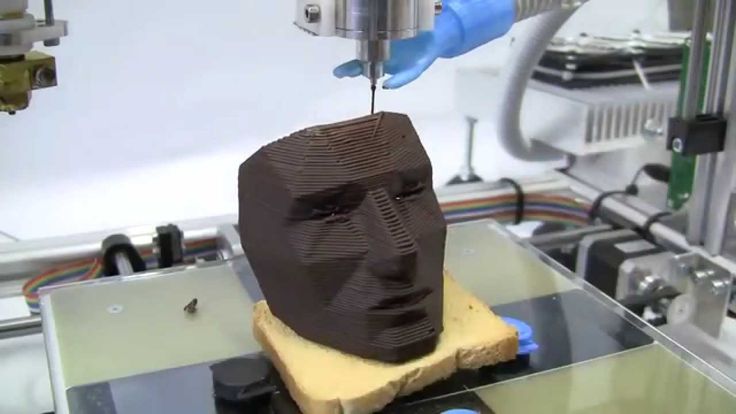 Unlike the SLA process, in this case the laser beam is not a light source, but a heat source. Getting on a thin layer of powder, the laser beam sinters its particles and forms a solid mass, in accordance with the geometry of the part. Polyamide, polystyrene, sand and some metal powders are used as materials. A significant advantage of the SLS process is the absence of so-called supports when building a model. In the SLA and MJM processes, when building overhanging elements of a part, special supports are used to protect freshly built thin layers of the model from collapse. In the SLS process, there is no need for such supports, since the construction is carried out in a homogeneous mass of powder. After building, the model is extracted from the powder array and cleaned.
Unlike the SLA process, in this case the laser beam is not a light source, but a heat source. Getting on a thin layer of powder, the laser beam sinters its particles and forms a solid mass, in accordance with the geometry of the part. Polyamide, polystyrene, sand and some metal powders are used as materials. A significant advantage of the SLS process is the absence of so-called supports when building a model. In the SLA and MJM processes, when building overhanging elements of a part, special supports are used to protect freshly built thin layers of the model from collapse. In the SLS process, there is no need for such supports, since the construction is carried out in a homogeneous mass of powder. After building, the model is extracted from the powder array and cleaned. The leading manufacturers of SLS machines are Concept Laser (Germany), 3D Systems (USA) and EOS GmbH (Germany).
Print material : Thermoplastic, metal powder, ceramic powder, glass powder
3.
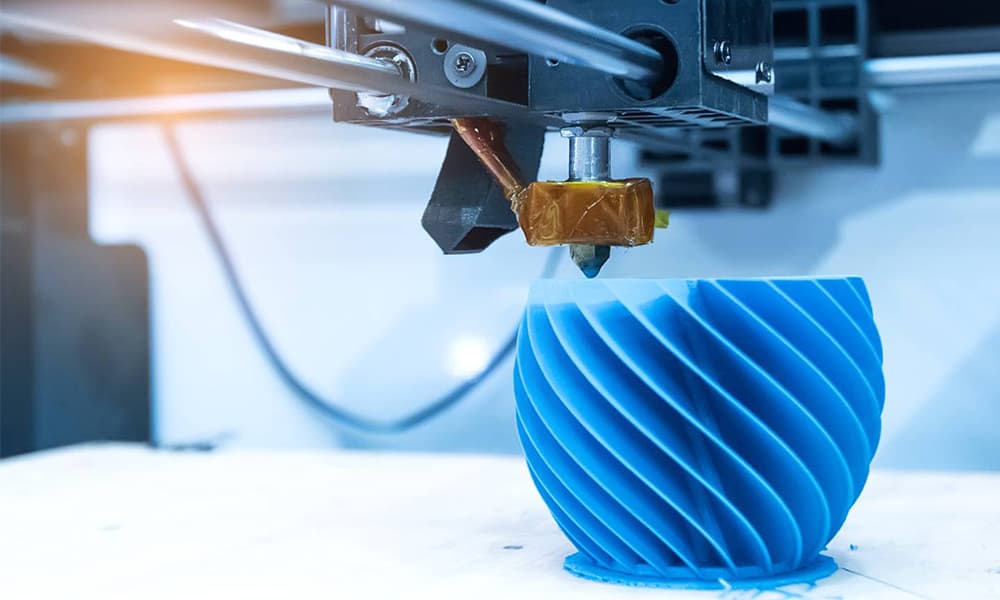 2. Direct Metal Selective Laser Melting (Direct Metal Selective Laser Melting, SLM)
2. Direct Metal Selective Laser Melting (Direct Metal Selective Laser Melting, SLM) Thin layers of quality metal powder are evenly distributed using a special coating mechanism, the platform on which the powder is located can be lowered vertically. The entire process takes place inside a chamber that maintains tight control of atmospheric inert gases such as argon, nitrogen and oxygen below 500 ppm. Each layer is then formed by selectively exposing the powder surface to lasers using two high-frequency X- and Y-axis scanners. The process is repeated layer by layer until the part is complete.
Media : Virtually any metal alloy in granular/crushed/powder form
3.3. E electron beam melting (Electron Beam Melting, EBM)
The technology is the manufacture of parts by melting metal powder applied layer by layer with a powerful electron beam in vacuum.
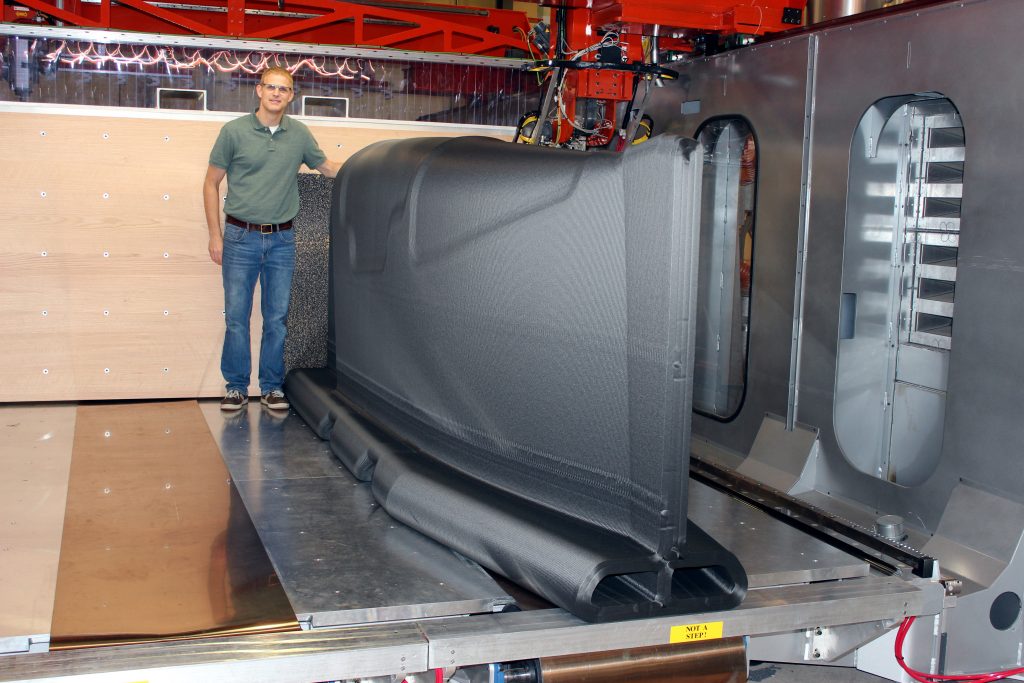 Unlike some methods of metal sintering, parts are obtained without voids, very durable.
Unlike some methods of metal sintering, parts are obtained without voids, very durable. The technology makes it possible to produce parts of any geometric shape with the parameters of the material used. The EBM machine reads data from a 3D model, usually located in a CAD file, and builds it up layer by layer. These layers are fused together using a computer controlled electron beam. In this way he builds whole parts. The process takes place in a vacuum, which makes it suitable for the manufacture of parts from materials that are highly susceptible to oxygen, such as titanium.
An important advantage is that the powder is a pure end material without any fillers. So you do not need to subject the printed part to additional heat treatment.
EBM operates at temperatures typically between 700 and 1000°C. Parts are ready almost immediately after cooling.
Titanium alloys, as noted above, are easily processed by this technology, making it a suitable choice for the medical implant market.

Print material : Titanium alloys
3.4. Selective Heat sintering (Selective Heat Sintering)
In order to be able to heat flow, special ultraviolet lamps are used in this technology. One of the main advantages is that for a given wavelength of infrared radiation, it is possible to select 2 types of material: one will transmit heat, and the other will reflect. Also, one of the main properties of IR radiation is the ability to choose a wavelength at which a particular material will absorb or reflect all radiation.
It is interesting to note that one 100 micron (0.1mm) thick layer is printed in just 1-2 seconds. This technology is a real breakthrough in high-speed printing. It is important to emphasize that the model is formed from powder, and all unused powder can be reused.
This technology allows you to make models of the most complex geometric shapes, and also allows you to print several parts at the same time.
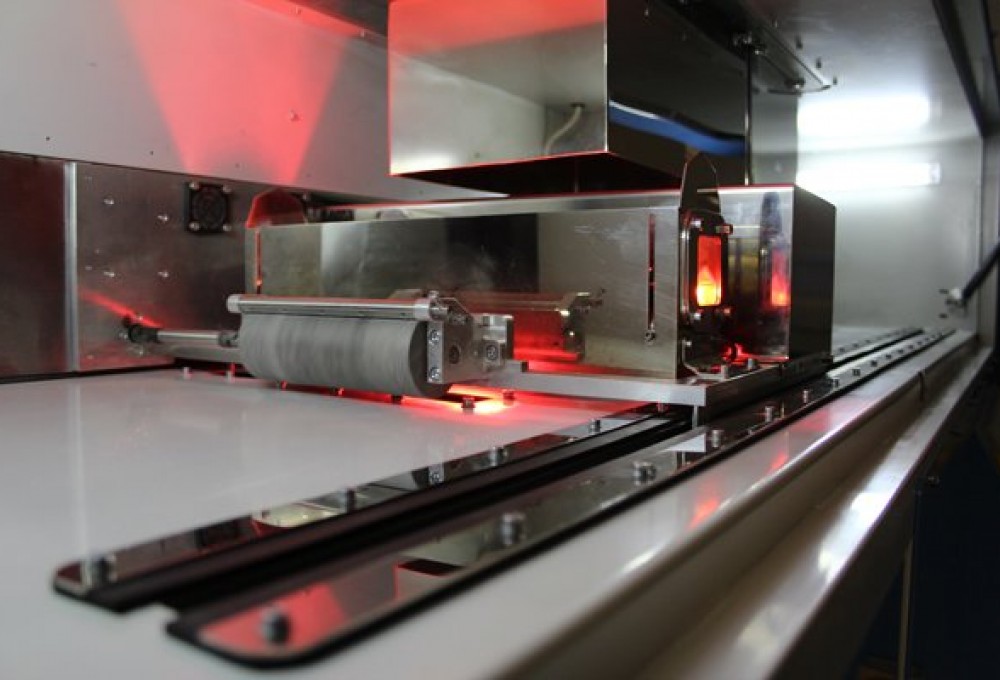
Media : Thermoplastic powder
3.5. Powder bed and inkjet head 3d printing, Plaster-based 3D printing, 3DP
), which is introduced into the powder. For these purposes, a print head similar to the head of an inkjet 3D printer is used.
The technology is very simple: there is a layer of powder, a print head passes over it and selectively (according to the cross-sectional shape) applies a special binding liquid. A fresh layer of powder spreads over the entire surface of the model, and the process is repeated. When the model is completed, unbound powder is automatically removed.
Printing Material : GIPS, gypsum composite, gypsum powder
- 4. Production of objects using lamination (Laminated Object Manaufacturn, Lom)
9000 9000 9000 9000 9000 , metal foil, polyethylene film
- 3D- printing from Mcor Technologies
Press Material : Standard Office Paper
- Contour manufacturing (Contour Crafting, CC)
- Fusion deposition prototyping (FDM). An accessible modeling method, which consists in the layer-by-layer application of a hot thread from a fusible working product (wax, metal, plastic). Most often used for rapid prototyping of various models, for example, mass production of jewelry, souvenirs and toys;
- Selective Laser Sintering (SLS). One of the famous prototyping methods. The product is formed from a powder product (ceramics, metal-plastic) by melting under the influence of a laser. The advantage of SLS is that you don't have to use a special structure to support floating elements;
- Laser stereolithography (SLA).
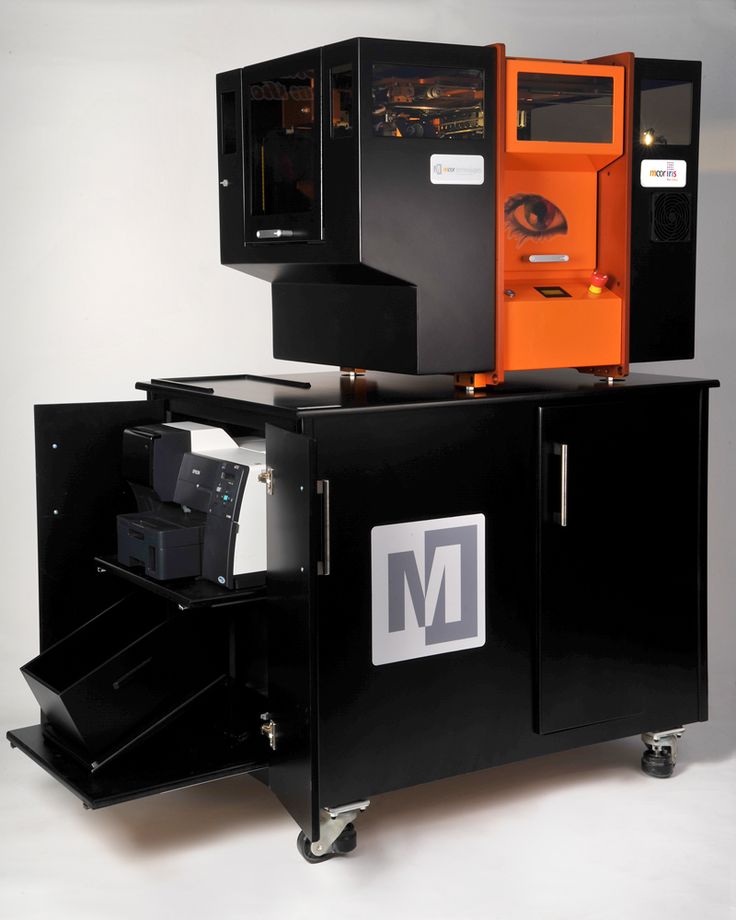 The most famous modeling method using a special liquid polymer that hardens under the influence of mercury radiation. The advantages include high print resolution, the least amount of waste and ease of finishing the product;
The most famous modeling method using a special liquid polymer that hardens under the influence of mercury radiation. The advantages include high print resolution, the least amount of waste and ease of finishing the product; - Electron Beam Melting (EBM). An advanced adaptive manufacturing method using special electron beams. Widely used in the production of various titanium products. Unlike models produced by SLS, blanks are solid and highly durable;
- Production of models using lamination (LOM). Progressive method of forming various models using layer-by-layer gluing. The resulting objects can be upgraded by machining. The advantage of this technology is the availability of the main consumable material - paper;
- Multi-Jet Modeling (MJM). A popular type of printing based on multi-jet simulation of a photopolymer product. It is used in various industries. The advantages include the possibility of multi-color printing and the interaction of materials of different properties and characteristics.

- Simplicity. Printing technology is accessible even to small children. Therefore, it can be used both in schools and offices, and in preschool institutions;
- Originality. FDM technology allows you to design objects with unusual geometry and cavities, which is not possible with other types of modeling;
- Variety. When working with FDM technology, a wide variety of plastics can be used, so you can get a fairly wide range of models with different physical and chemical properties. 3D objects can be durable, flexible, luminous, soluble in water, and with many other properties.
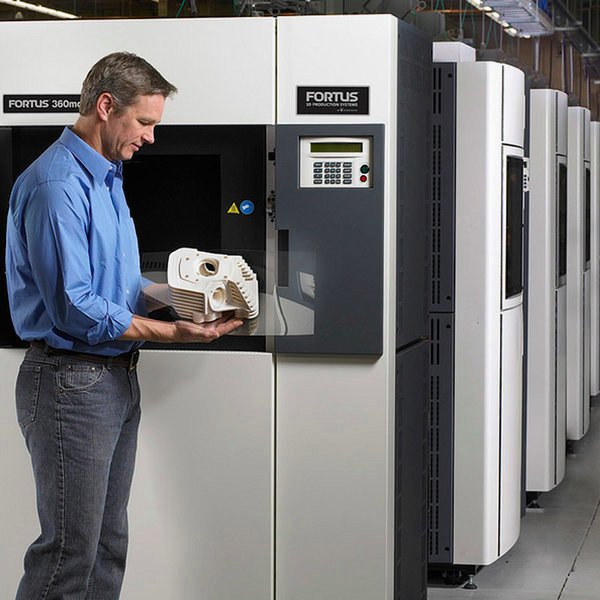
- High speed. Modern technologies provide short terms of product prototype development;
- Minimum material consumption. Progressive 3D printers allow you to produce objects with the lowest waste rates;
- Robust internal structure. Innovative devices help design large objects with minimal weight;
- Sustainability. The materials used in prototyping are completely safe and do not pose any harm to the user.
Printing
Technologies and 3D-printing methods
The active introduction of 3D technologies contributed to the creation of progressive 3D printers with a rich set of options. 's high-performance 3 D-printing technologies have produced original designs for marketing, food service, industry and landscaping.
3D printing is a procedure for designing three-dimensional compositions of a given geometric shape.
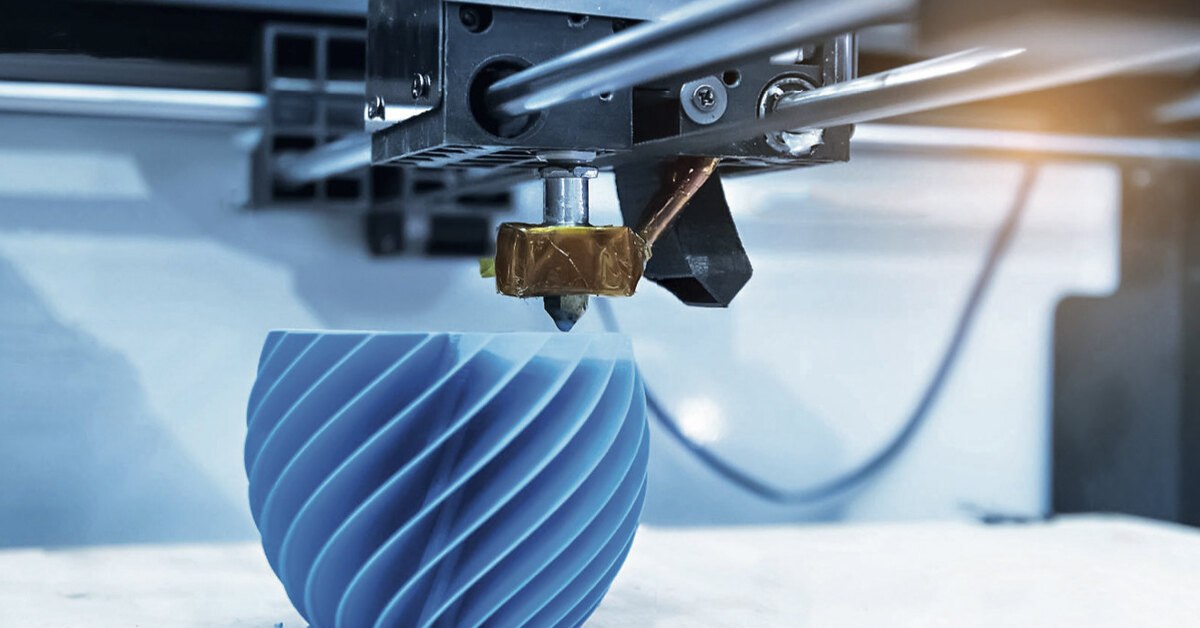 The process of obtaining the original model is based on the phased construction of the object with clear applied layers, clearly demonstrating the edges of the product.
The process of obtaining the original model is based on the phased construction of the object with clear applied layers, clearly demonstrating the edges of the product. Innovative 3D printing methods are in high demand in the construction industry, architecture, education, medicine, bioengineering and many other fields. Unlike traditional methods of obtaining parts - milling, turning, they allow you to achieve high accuracy, the greatest savings in materials and time.
Features of 3D printing
Designed models are reproduced using special computer graphics programs , which are designed specifically for this purpose. Building one model can take from a couple of hours to two or more days, depending on the specifics of the project. The desktop device allows designers and design professionals to turn original prototypes into reality.
The advantage of modern technology is the efficiency and cost-effectiveness of modeling objects, for example, in the manufacture of products in production.
 3D printers are indispensable for creating unique products in preschool educational institutions, building more complex samples in schools and specialized institutions. Modern technologies make it much easier to work with 3D models, so this technology becomes accessible to children. 3D modeling allows you to create objects of unique geometric shapes of varying degrees of complexity.
3D printers are indispensable for creating unique products in preschool educational institutions, building more complex samples in schools and specialized institutions. Modern technologies make it much easier to work with 3D models, so this technology becomes accessible to children. 3D modeling allows you to create objects of unique geometric shapes of varying degrees of complexity. Basic 3D printing
Other 3D modeling technologies are common in adaptive and industrial manufacturing. All of them have their own characteristics and nuances. However, the simplest and most popular 3 D-printing method for is Fused Deposition Modeling (FDM).
3 reasons to choose FDM technology
FDM technology uses time-tested thermoplastics that are used in traditional manufacturing of various products.
Advantages of modern 3D printing technology from ANRO-technology
Additional advantages of creating a 3D object include durable and convenient storage of materials that does not require special conditions.
3D technology is the future of prototyping, because thanks to them today the most non-standard design projects are being implemented both in everyday life and in the industrial sphere.

Learn more


